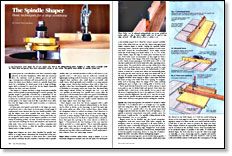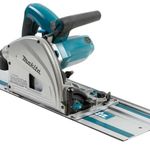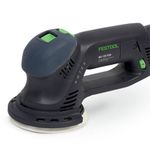
Synopsis: Contemporary craftsmen are more likely to switch on a spindle shaper than reach for a handplane for raised panel work or large moldings. In this article, David DeCristoforo describes how spindle shapers work. He reviews the sophisticated cutter systems that are available and tells how to use the tool. He discusses shaper sizes and the relationship between spindles and horsepower. He talks about mounting cutters and how to shape curves. Side information covers the many types of shaper cutters.
In years gone by, a woodworker’s tool chest contained a large selection of wooden handplanes. With skill and enormous labor, the craftsman could cut rabbets, grooves and moldings. Contemporary craftsmen still must perform the same operations, but they’re more likely to switch on a spindle shaper than reach for a handplane for raised panel work or large moldings. Again, skill is essential for a good job, but the shaper drastically reduces the labor and time involved.
The shaper is a simple machine—a large horizontal worktable with a vertical spindle projecting through a circular opening. The spindle height is generally controlled by a handwheel on the front of the machine. Cutters are mounted on the spindle, which is driven by a powerful motor, either direct drive or belt driven. At first glance, the shaper may look like a glorified router table, but even the largest router can’t match its power or continuous cutting ability.
In times past, you’d grind a steel knife to the shape you wanted and bolt it into a cutter head. In recent years, a broad range of sophisticated cutter systems have become readily available, making the shaper even more versatile than ever. These cutters, which have knives permanently brazed to a heavy steel body, can be arranged in various ways on the shaper’s spindle to cut a wide variety of molding profiles, do basic mortise-and-tenon joinery, cope-and-stick moldings for doors and windows, and numerous other tasks. Once you’ve learned to use collars, templates and hold-downs, the shaper is ideal for rapidly producing oddshaped parts in large numbers.
Shaper sizes—Shapers are most often classified by spindle size, which, to a large extent, determines the horsepower of the motor; as spindle size increases, so does motor size. I don’t think any serious craftsman should consider a machine with a spindle smaller than in. and with less than a 2-HP or 3-HP motor. A -in. spindle with a 1 HP motor may be sufficient initially for lightweight molding work for furniture, but most workers quickly outgrow these machines. Also, small shapers can handle only small cutters, which generally aren’t available in as many patterns as larger cutters. Heavy-duty machines—those with at least -in. spindles—often have interchangeable spindles, which offer greater flexibility in mounting cutters and router bits. My heavy-duty Delta shaper (Model 43-822), for example, has -in., -in. and 1-in. spindles, an extra-long -in. spindle and a router collet, all driven by a 3-HP reversible motor with a two-speed (7,000 RPM and 10,000 RPM) pulley setup.
From Fine Woodworking #69
For the full article, download the PDF below:
Fine Woodworking Recommended Products

Makita SP6000J1 Track Saw

Milwaukee M12 23-Gauge Cordless Pin Nailer

Festool Rotex FEQ-Plus Random Orbital Sander






















Log in or create an account to post a comment.
Sign up Log in